A few weeks ago my sister Rachel wanted to know how to build a simple compost bin she could use for kitchen scraps and fall leaves. I asked if she’d send me a quick video clip I could run during a Goodstream, then we could have viewers share their thoughts. She agreed, and we had a great show.
Composting can be as simple as throwing organic material on the ground, as I write in Compost Everything: The Good Guide to Extreme Composting, or it can be more complicated, with balancing ratios of carbon and nitrogen and regular turning and attempts to maintain a pile within a certain temperature range.
For Rachel’s backyard, complicated was out – but so was just throwing things on the ground to rot. She needed a little order and she needed a good spot to contain the compost, so she build a simple pallet compost bin.
Here are the pallets, ready to go:
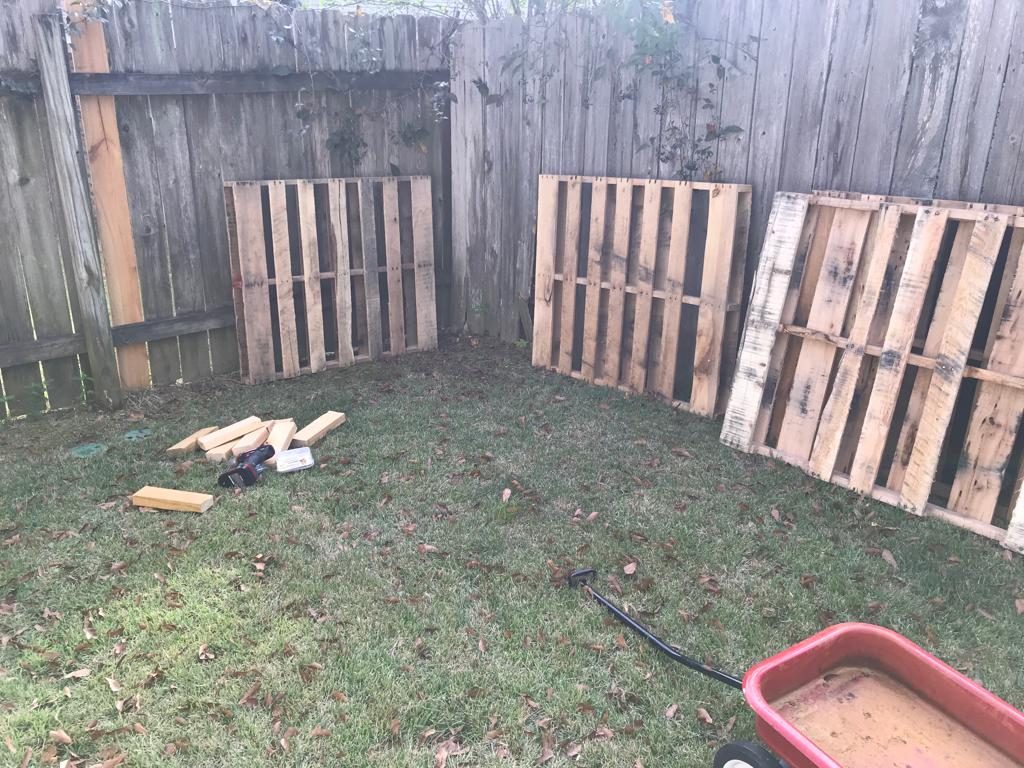
And here they are partially assembled:
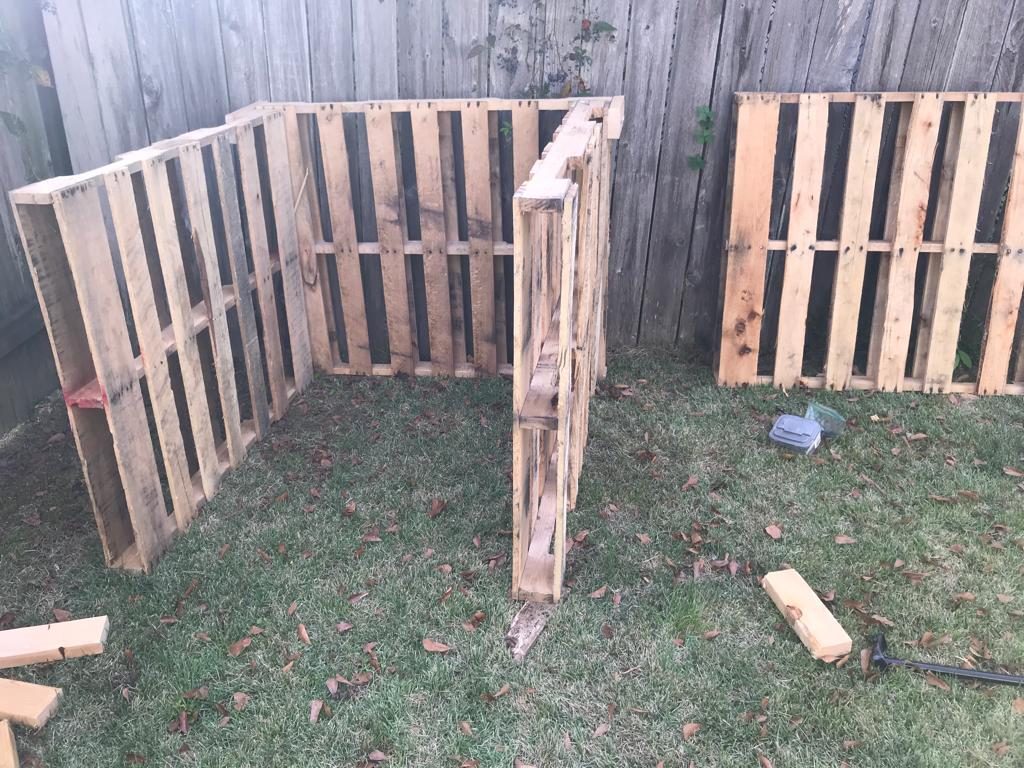
And here they are finished:
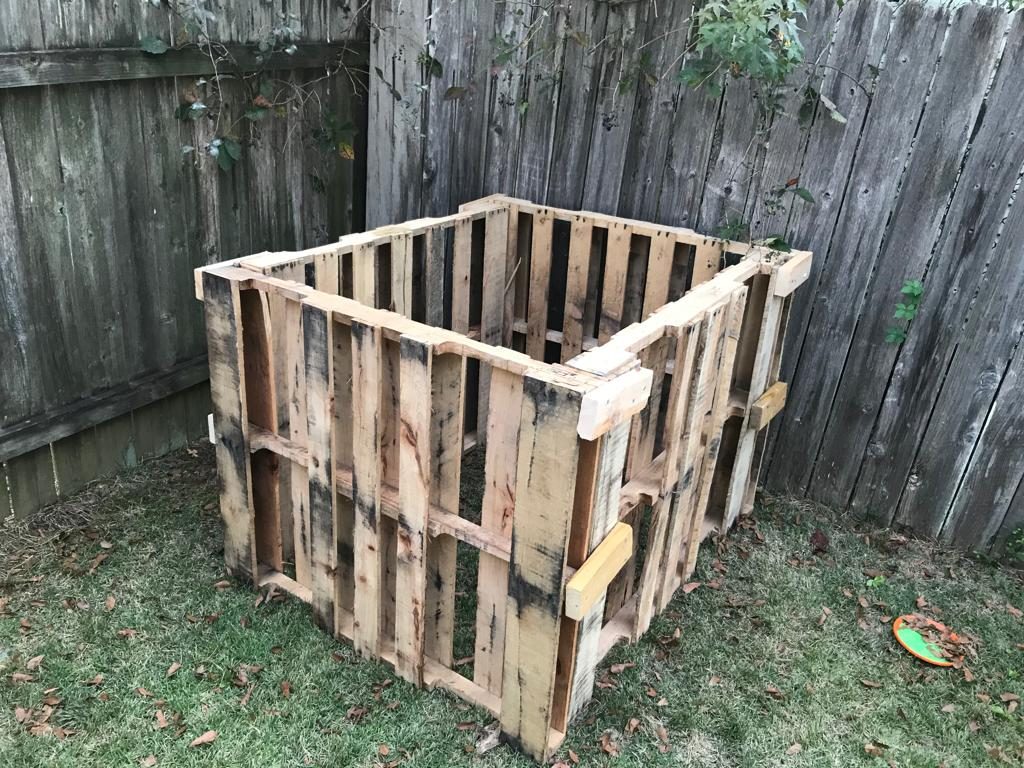
That is a good-looking compost bin. Almost a 4′ x 4′ x 4′, which is a good space.
Here’s my sister after adding the first round of compostable materials:
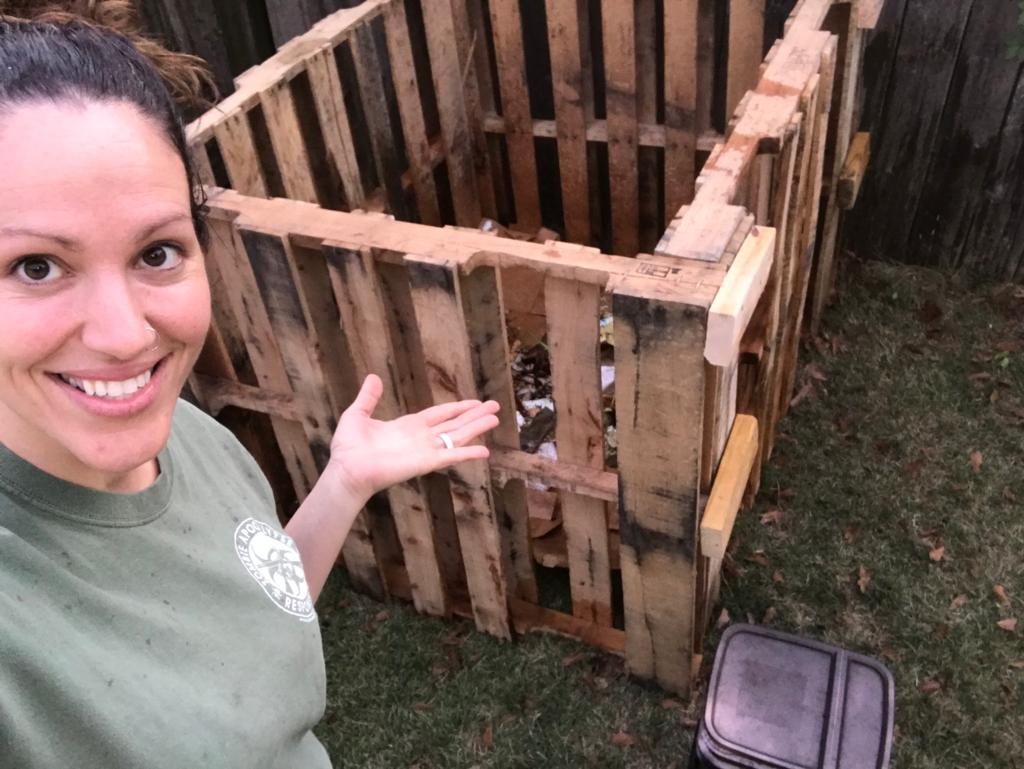
Good job, Rachel!
Note that to the bottom right there is a square black bucket. That is a cat litter container that my sister is using for a kitchen compost container.
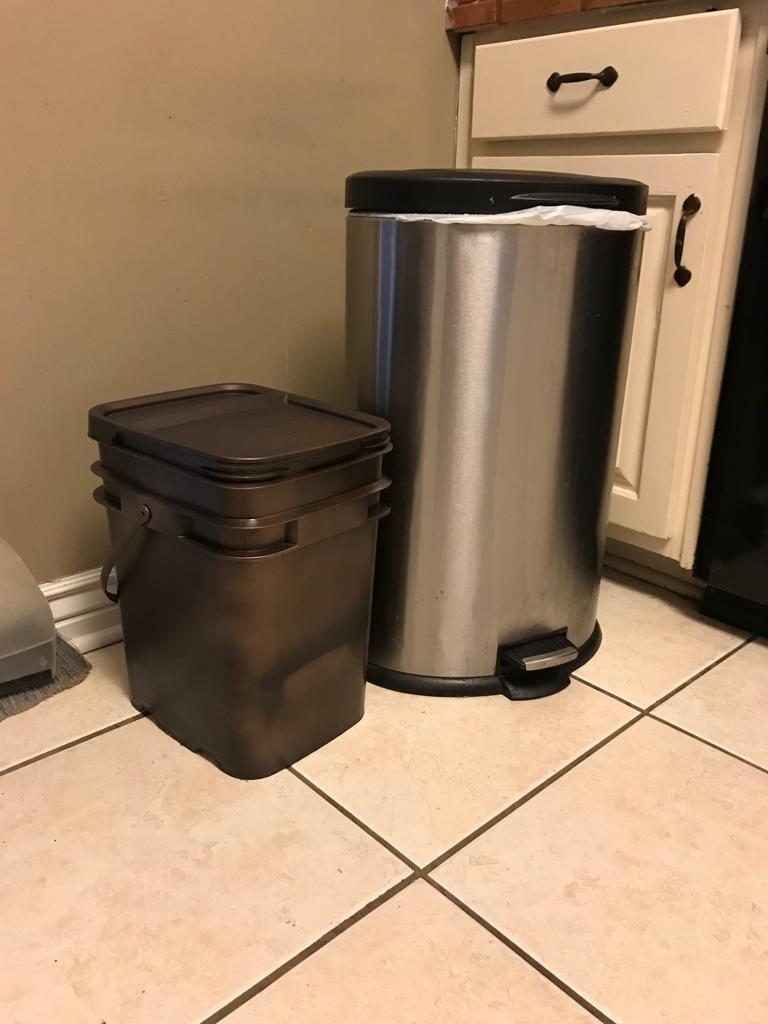
An old kitty litter bucket can be spray-painted and used to collect kitchen scraps for the compost pile
She spray-painted it black so she didn’t have a garishly colored cat litter bucket sitting in her kitchen.
This size bucket is great for a family composting system. You simply throw in your kitchen scraps and spoiled leftovers, your used paper towels and paper plates, your leftover hair from haircuts and whatever other organic matter passes through the house, then empty the bucket when it’s full.
I keep a few 5-gallon buckets in rotation and will empty them out into my compost pile, then blast them out with the hose, then leave them in the sun for a day or two to sterilize them and cut down on odor, then put them back into kitchen duty as needed.
Building a Simple Compost Bin from Pallets
All you need to do to build a pallet compost bin is to get four pallets and screw or zip-tie them together. That’s enough to keep big animals from getting inside. Here’s a multi-bin pallet compost pile I built:
If I wanted to also keep out smaller animals, I could cut and staple hardware cloth to the inside, and probably put it on the bottom as well, as some beasts will burrow up through.
Generally, though, I don’t bother. It’s not worth the effort, as I live in the country and a few rats and mice aren’t a big deal.
Dealing with Compost Pile Odors
I have an epic compost pile I recently build with concrete blocks on a slab:
I’ve been dumping kitchen scraps into the first of the three bins and I have to say – you CAN smell it from yards away. The material is wet, sloppy and stinky.
There is an easy way to deal with this. All you need to do is to cover with some carbon material, like leaves or shredded paper or even bagesse or wood chips. The latter take more time to break down but still make great compost.
I like continual bin methods of composting, rather than arranging layers as I go and trying to turn regularly and hit perfect ratios for fast decomposition. In real life, most of us just need a place to throw a few kitchen scraps now and again. When you have a bin in the backyard you can just throw carrot peelings in after meal prep, that is good enough. If you have the additional benefit of fall leaves, keep some on hand to cover the scraps as you go. This eliminates odor.
Rachel’s simple compost bin is perfect for a backyard – you don’t need anything fancy. A little bit of scavenging and you can quit throwing food scraps in a landfill and start turning them into good food for your garden.
Finally, remember you can compost all kinds of food scraps, not just the ones on the approved composting lists floating around. Meat, bread, oils – throw it all in. Ignore the compost police!
Meat is actually very good plant food. Don’t waste it.
If you don’t have my free composting guide yet, you can get it here. Thanks for reading.

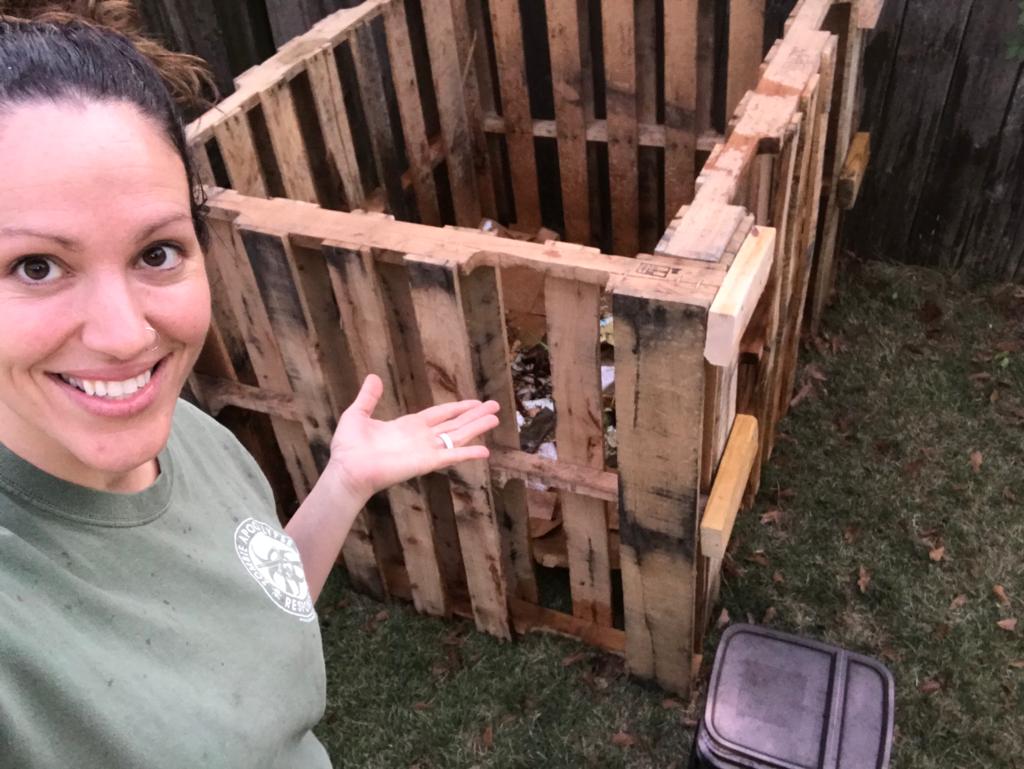
1 comment
subscribe pls
Comments are closed.